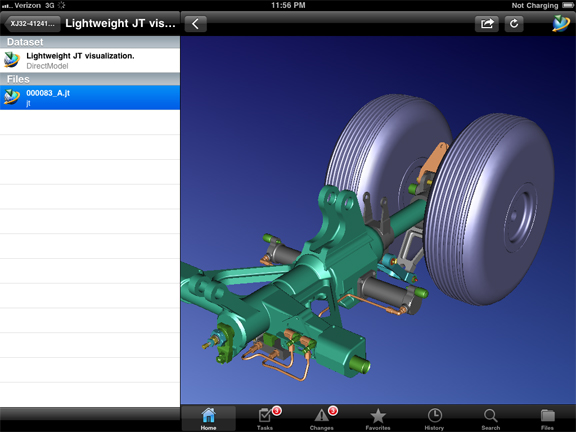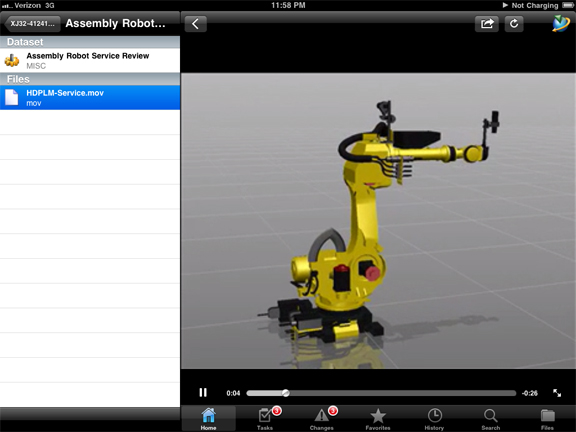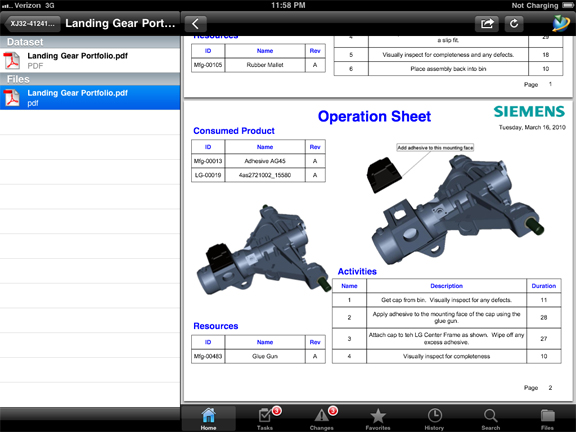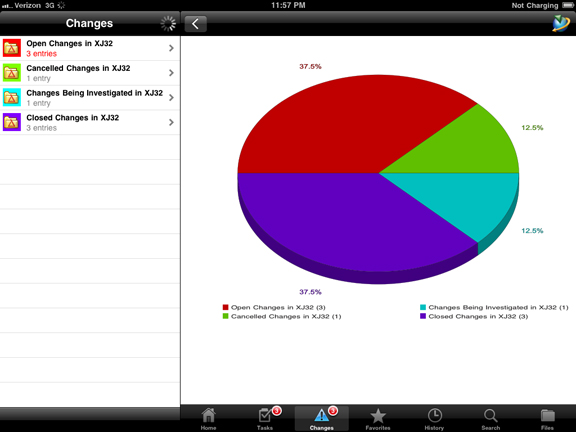Latest News
September 8, 2011
Five or six years ago, if you had glanced across the pool of reporters at a tech conference, you would have seen them furiously typing away on their laptops and notebooks, precariously balanced on their knees. A year and a half ago, a few iPads began appearing on the scene, outshining the Netbooks nearby. This week, among the tech scribes and analysts who had traveled to Boston, Massachusetts, to get an update on Siemens PLM Software, the iPads clearly outnumbered other devices. (There were, of course, still a handful editors who showed their preference for the classic medium: pen and paper.) Two keynote presenters openly admitted they couldn’t bear to part with their iPads. They approached the podium with iPads tucked under their arms, even though, to present, they must use a PC loaded with PowerPoint.
As a fitting homage to the triumph of the iPad, Siemens PLM Software swiftly followed up its debut mobile app Teamcenter Mobility 1.0 with an upgrade. The first version was confined almost entirely to remote data access. Simply put, it was a mobile app for iPad users to sign into a Teamcenter database, perform searches, review pending tasks and change orders, and view 3D designs in lightweight JT format. Teamcenter Mobility 2.0, now available for download at Apple app store, adds limited editing and markup functions, along with task initiation options.
The app’s Facebook-style notification shows pending operations with a number (corresponding to the number of tasks and change orders that need attention) displayed over its icon. The app allows you to access online data from its interface, but it also offers an Offline Cache mode, which allows you to download the design file to your iPad’s local storage. When going back online, the app will synch your offline changes to update the online database.
Most notably, Teamcenter Mobility 2.0 includes some basic markup functions, which lets you red-line and annotate Office documents (PDF, Words), design files, and digital photos taken with the iPad. It also lets you play .mov files, which could be used to deliver assembly and repair instructions. Pending tasks and changes can be displayed by due dates and by assigned owners, giving you an easy way to monitor progress. You may also sign off or submit problem reports to Teamcenter database from the iPad app.
Siemens PLM Software’s Active Workspace, currently still in development, is expected to drive the company’s vision for HD-PLM, a visual data management environment. (For more, read “Visualizing the Forest of Data Beyond the Trees,” April 1, 2011.) Eric Sterling, Siemens PLM Software’s senior VP of global marketing, revealed that the company is considering adding multi-touch support for Active Workspace. If the company follows through, it raises the possibility that some HD-PLM functions can be delivered through a mobile app. The company is also hard at work on an Android version of Teamcenter Mobility, currently in prototype phase.
Teamcenter Mobility is available in two editions: free and paid ($19.99). Some functions available in the paid version are not in the free version. The free version serves primarily as an evaluation copy, preloaded with a set of sample data.
Subscribe to our FREE magazine, FREE email newsletters or both!
Latest News
About the Author
Kenneth Wong is Digital Engineering’s resident blogger and senior editor. Email him at [email protected] or share your thoughts on this article at digitaleng.news/facebook.
Follow DE









